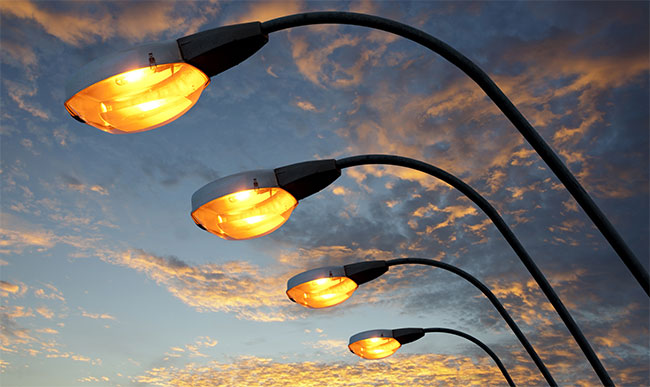The Washington Post has taken a closer look at cities that are switching their metal halide or high-pressure sodium lighting to LEDs or connected LED lighting following a report by the American Medical Association. The story looks into the warning issued by the AMA last June that says LED streetlights can “disturb sleep rhythms and possibly increase the risk of serious health conditions, including cancer and cardiovascular disease.” There are also concerns that the LED streetlights can “impair nighttime driving vision.”
The report by the AMA says the LED streetlights have the same impact on sleep patterns as computer screens and backlit e-readers. The blue light from LEDs “delays the normal transition to nighttime physiology” and a “short-term detriment in sleep quality has been observed after exposure to short wavelength light before bedtime.” The American Medical Association report goes on to say that it “recommends that communities considering conversion to energy efficient LED street lighting use lower CCT (correlated color temperature) lights that will minimize potential health and environmental effects.”
The Washington Post talked with a number of cities, including Seattle, Phoenix, and New York, that have converted roadway and city lighting to LED. They were all aware of the AMA report, but dismissed many of the claims. A spokesman for Seattle said the LED streetlights emit significantly lower light than computer screens, laptops, and televisions. Many cities are now looking at installing 3000k LED models instead of 4000k models as a result of the AMA report.
Just last week, the Department of Energy released its report on LED lighting, which included a significant section on city and roadway lighting. It cited Los Angeles, which completed an LED replacement program by installing more than 170,000 LED streetlights, reducing energy usage by 64%, and saving $9 million in energy and bulb replacement costs. The DoE report goes on to say that across the country, approximately 20% of all roadway lighting has been converted to LED. By 2035, that percentage will be anywhere from 89% to 93%. Most of that lighting will be connected to a smart lighting system, which will be able to measure traffic patterns, weather, and energy efficiency. The energy savings in 2035 from street lighting alone would equal the electricity used to power more than 1.3 million homes.
Tagged with LED, lighting, street lighting, tED
